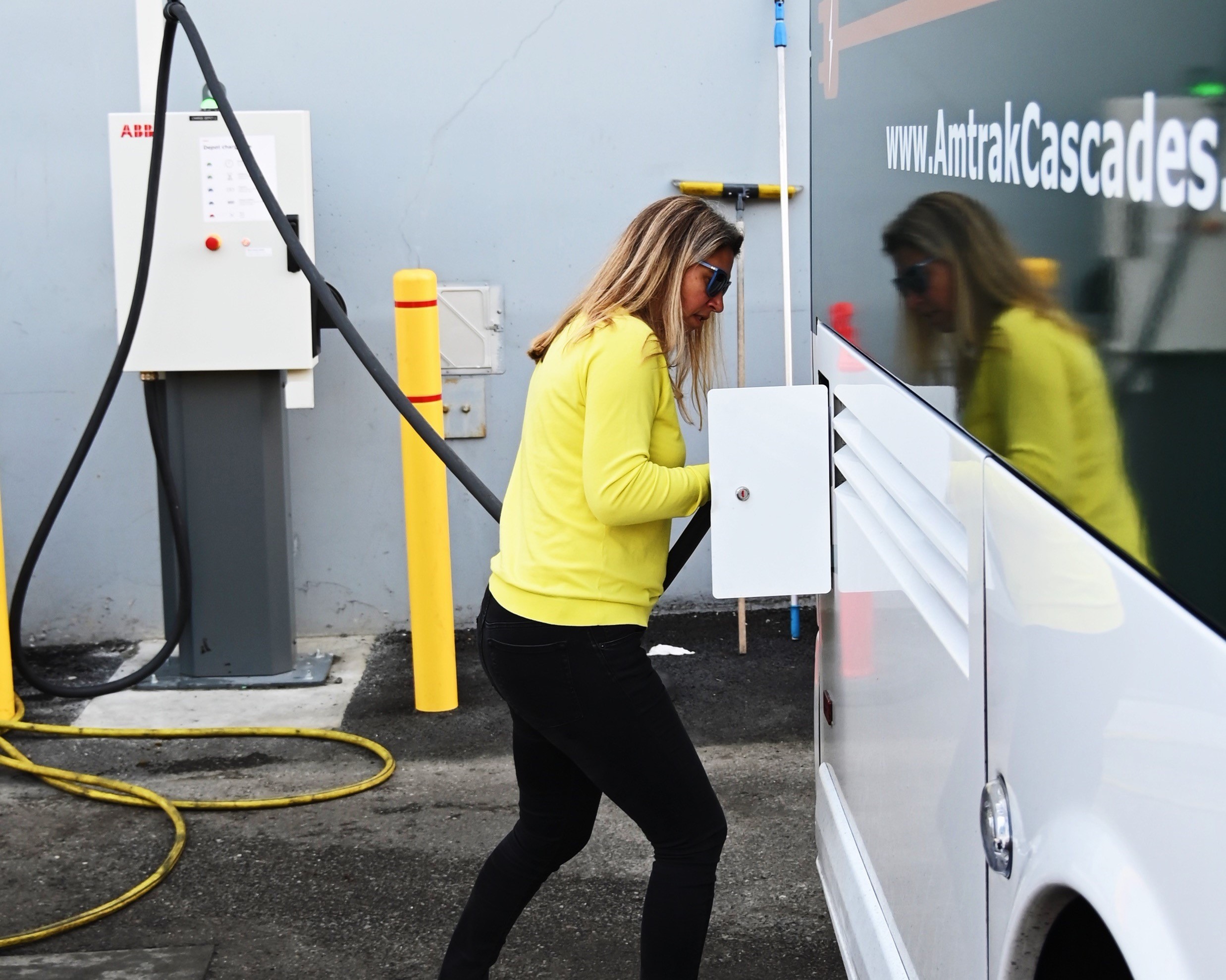At MTRWESTERN, we’ve spent the last three years paving a new path focused on transitioning our motorcoach fleet to zero-emission electric buses. While this ambitious initiative to reduce our carbon footprint springboards ahead, establishing the charging infrastructure to support electric bus operations has come with its own set of challenges.
For any motorcoach operator considering a similar shift to electric buses, we wanted to share some key insights we have gleaned through this process of integrating electric vehicle (EV) charging infrastructure into our operations. Here are five major considerations and insights based on our experience:
-
Location Planning is Critical
One of the biggest challenges in setting up EV charging stations is choosing the optimal sites and planning how much electrical service capacity is needed at each location. You need to carefully map out locations based on your service routes and schedule to ensure buses can charge when and where it makes operational sense.
The goal is to conduct detailed analyses to determine which routes, terminals, depots and transit hubs would have the highest charging demand over certain periods of time. This research exercise helps prioritize and scale charging infrastructure rollout appropriately. Most important, is starting early to help mitigate costs and plan an appropriate rollout timeline.
Charging locations also need to account for existing and future load from other energy needs at the site beyond just bus charging. Maintenance buildings, administrative offices, lighting and more can factor into total electrical service requirements. Oversizing electric service at locations is wise to accommodate growth.
-
Work Closely With Your Utility and OEM Partners
Our local utility company, Seattle Public Utilities, and charging station OEM, were both invaluable partners throughout the process of installing charging equipment and upgrading service at for our first EV bus rollout at our Seattle operations location. From the start, we have communicated frequently with their team to coordinate electrical service planning based on our fleet electrification roadmap.
Utilities can take many months to upgrade transformers and service lines to locations with higher electrical loads. Starting this process as early as possible is crucial to avoid delays. Utilities can also audit sites to provide recommendations on service needs based on charging use cases.
Additionally, utilities have their own financial programs, grants or other incentives based on state-specific initiatives to support EV infrastructure build-outs that can help offset costs for charging equipment.

-
Consider Different Charging Speeds
Not every charging location needs to be outfitted with the same charging equipment. To start, we installed 3 DC fast chargers based on anticipated charging needs at our Seattle location.
Level 2 chargers can also work well for buses that can charge overnight, as they provide a slower charge over an extended period. DC fast chargers are more costly but can rapidly charge a bus battery during shorter periods, like layovers between routes. Having a mix may enable you to scale the infrastructure build-out cost efficiently.
-
Embrace Charging Management Software
Within the next year, we anticipate having multiple electric buses and chargers across our network. With charging management software, you’re able to remotely monitor charging status across all of your service locations.
The software automatically starts charging vehicles when their battery level is low and spreads out the load to avoid overtaxing a location’s electrical service. On the back end, the system provides data and analytics on energy usage.
The software basically eliminates any manual work in managing the charging process while maximizing energy efficiency. For many operators on the EV transformation path, this software will inevitably be one of the most valuable investments you make.

-
Future-Proof Your Approach
You may also want to future-proof your EV infrastructure plans to accommodate other types of vehicles down the road. Any site upgrades made to electrical service should allow for additional charging capacity to be added more easily.
The charging hardware we opted to install is designed to handle higher charging speeds as battery technology continues advancing. With this flexible and scalable approach, we’ve built a solid foundation to further accelerate our fleet electrification roadmap in the coming years.
The shift to zero-emission electric vehicles is a monumental transition for the transportation industry, but one that’s absolutely critical given the need to drastically reduce greenhouse gas emissions from mobile sources. Putting the right charging infrastructure in place is just one piece of the puzzle, but an essential one that requires diligent planning and execution. While challenging, we’ve found the investment to be worthwhile as we strive to build a cleaner and more sustainable transportation network.
Jeremy Butzlaff
President, MTRWESTERN








